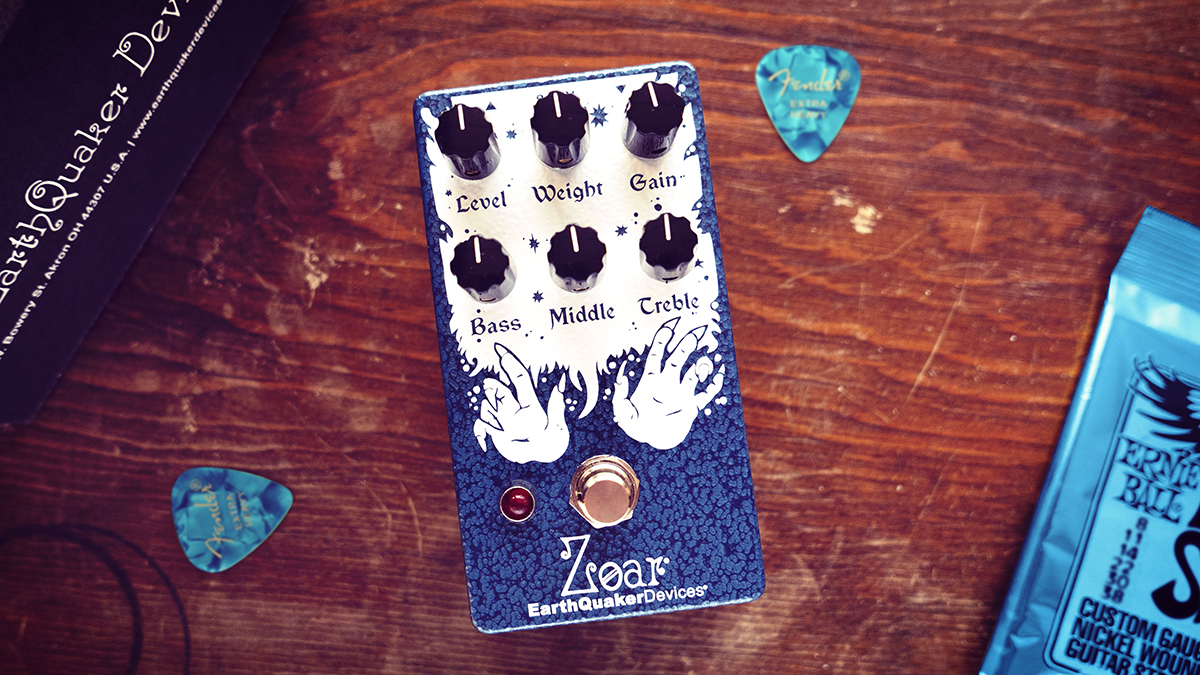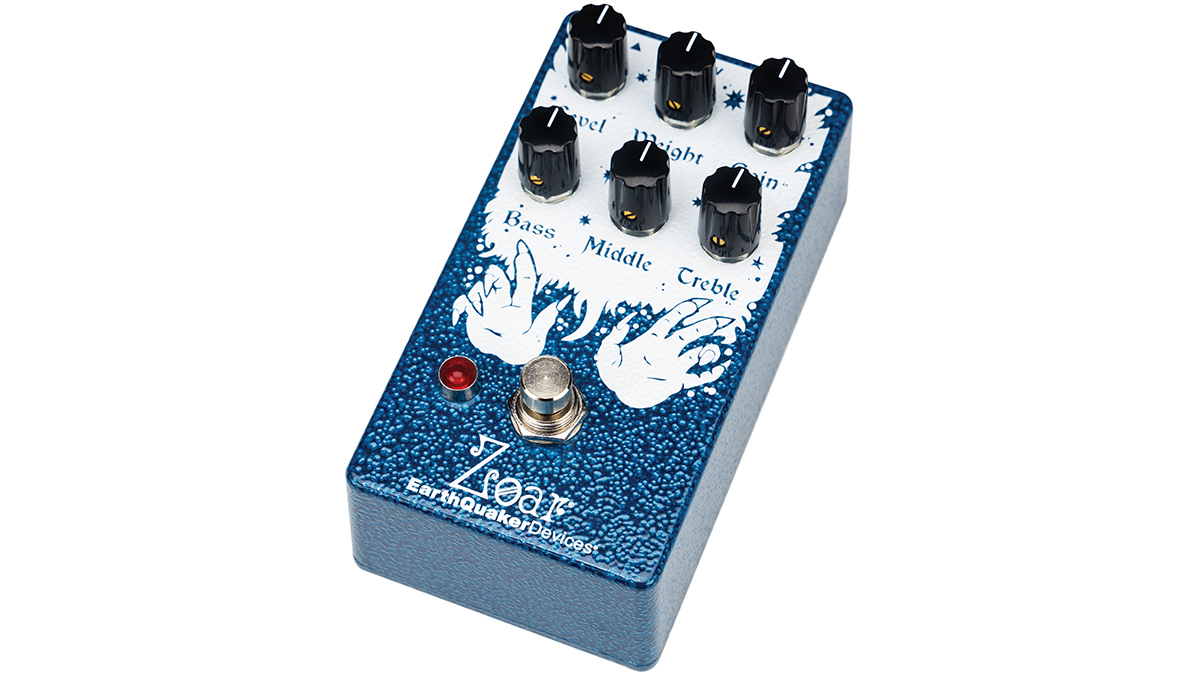
What the hell is a Zoar? One quick Google search reveals it was a Biblical city – and that the name roughly translates to “little” or “insignificant.” Now, I don’t believe the folks at EarthQuaker Devices are biblical scholars; nor do I believe they intended to create a “little” or “insignificant” dirt pedal.
But I’m pretty sure – judging by the illustrated hairy creature with claws of doom on the pedal’s face – you’re gonna need the Zoar Dynamic Audio Grinder when you’re down on the killing floor.
EQD has been firing on all cylinders in sonic saturation with the recent releases of their Sunn O))) Life Pedal V3, Special Cranker and Blumes stompboxes that come loaded with colorful shades of fuzz, distortion and overdrive that can blow the roof off.
And while the Zoar Dynamic Audio Grinder sounds like a gnashing, bloodthirsty animal, EQD’s description of it – and I’m paraphrasing here – as a “medium-high gain discrete distortion” pedal that utilizes transistors and eschews opamps and diodes to impart more viable touch-sensitivity for players, all sounds very tame and nuanced to me.
Still, compared to the other dirt devices in EQD’s stable, the Zoar appears to have the most tone-shaping capability with its six-knob layout for Level and Gain, Weight and passive EQ set of Bass, Middle and Treble. It all seems familiar except for the Weight control, which introduces additional low-end content and body into the circuit.
Moreover, Weight also shapes the characteristics of the gain structure depending upon the type of guitar pickups employed, and where you land with the rest of the five dials on its highly interactive control set.
The Zoar comes pedalboard-ready with top-mounted jacks, red LED indicator, a silent Flexi-Switch and 9- to 18-volt operation; and beneficially, running the Zoar at 18 volts yields crisper dynamics, enhanced clarity and quicker response.
Armed with a ’59 Les Paul Historic and a Hendrix Strat, I ran the Zoar through my arsenal of classic amps, including a Fender Deluxe Reverb, a Matchless DC-30 and a Marshall Jubilee. As I alluded to earlier, the Zoar is less of a feral distorted beast and more of a domesticated drive with a broad range of fattened boost, crunchy speaker breakup and muscular distortion.

Touch sensitivity is spot-on; whether you’re heavy-handed or have a soft touch, your pick attack is accentuated dramatically. As far as the amount of gain found on the pedal goes, it’s only after 3 o’clock on the Gain knob that the Zoar becomes crisply distorted and approaches fuzz (if you dial back the passive EQs), and if you push it this far, it sizzles like an overdriven Fender amp pushed to its limits.
It’s still a very detailed drive that doesn’t get overly sludgy, and courtesy of its Weight control, you can add some walloping low-end punch to your tone. I also enjoyed getting the Zoar to sound very amp-like by cutting the Treble and boosting the Bass, Middle, Weight and Gain around 1 o’clock to achieve that wonderful base tone of a Marshall or Orange amp on steroids.
In other words, the Zoar is a bit of a wild animal that’s not overly ferocious; but it barks, it roars and it bites, and I’m keeping it as a pet.
Specs
- PRICE: $/£129
- TYPE: Distortion pedal
- CONTROLS: Level, Weight, Gain, Bass, Middle, Treble
- FEATURES: All-analog signal path, Silent relay-based switching with Flexi-Switch Technology
- BYPASS: True bypass
- POWER: 9-18V DC
- CONTACT: EarthQuaker Devices







